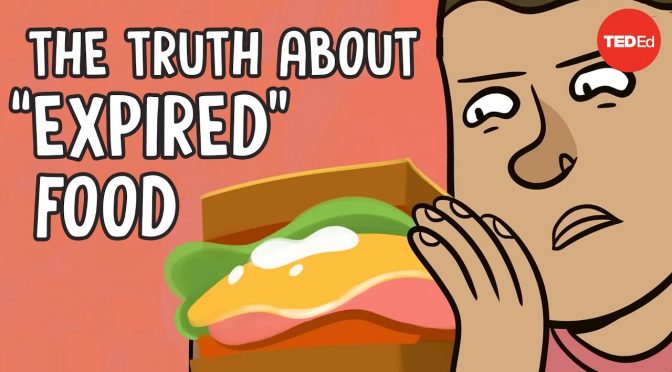How often do we find ourselves discarding food items from our fridge because they’ve crossed the date mentioned on their labels? From hamburger buns to milk past its sell-by date and many other products, we throw away a significant amount of food based on these dates. However, these dates often don’t indicate that the food has gone bad. This article aims to demystify food expiration dates and provide insights into reducing food waste, based on a video presented by Carolyn Beans on TED.
The History and Purpose of Food Expiration Dates
Before the 20th century, the path from food production to consumption was much more direct, and people relied on their senses to assess food freshness. However, with the advent of processed foods in supermarkets, it became challenging to gauge product ages. In response to consumer demand in the 1970s, many supermarkets adopted a system called open dating, where food manufacturers or retailers labeled products with dates indicating optimum freshness. However, these dates had little to do with food safety and were often set early to ensure customers tasted the food at its best.
The Reality of Food Safety and Expiration Dates
Contrary to popular belief, many foods are safe to eat far beyond their labeled dates. Shelf-stable groceries like cookies and pasta might taste stale, but they aren’t a health risk. Canned foods can stay safe for years, and properly stored frozen dinners can be preserved indefinitely. Even refrigerated eggs are good for up to five weeks. However, there are exceptions such as meat, ready-to-eat salads, deli meats, and unpasteurized cheeses, which are more likely to carry pathogenic bacteria and should be consumed within their printed dates.
The Impact of Misinterpreted Expiration Dates on Food Waste
Misinterpretation of date labels contributes significantly to food waste. A 2019 survey revealed that over 70% of Americans use date labels to decide if food is still edible, and nearly 60% said they’d discard any food past those dates. Restaurants and grocers often follow the same practice. To combat this issue, experts advocate for laws requiring standardized phrases on date labels: “Best if used by” for freshness and “Use by” for safety. Implementing these standards could prevent a significant amount of food waste annually.
Towards a Future of Reduced Food Waste
Several strategies can help reduce food waste. Grocers could consider removing date labels on produce, as some UK supermarket chains have done, to encourage consumers to use their judgement. Policies incentivizing grocers and restaurants to donate unsold food could also be beneficial. Countries like France have even made it mandatory for many supermarkets to donate unsold food. Ultimately, the best way to prevent food waste is to consume what we buy and trust our senses to decide if food is fit for consumption.
The Video: “Food Expiration Dates Don’t Mean What You Think”
Embedded below is a highly informative video titled “Food expiration dates don’t mean what you think” by Carolyn Beans, which provides a comprehensive understanding of food expiration dates and their implications on food waste. This video, hosted on the TED Education YouTube channel, is a must-watch for anyone interested in reducing food waste and making the most out of their groceries.
The video begins by highlighting the common practice of discarding food items based on their expiration dates. It then delves into the history of food expiration dates, explaining how the advent of processed foods led to the introduction of open dating, a system where food manufacturers or retailers label products with dates indicating optimum freshness. However, these dates often don’t indicate that the food is unsafe to eat.

